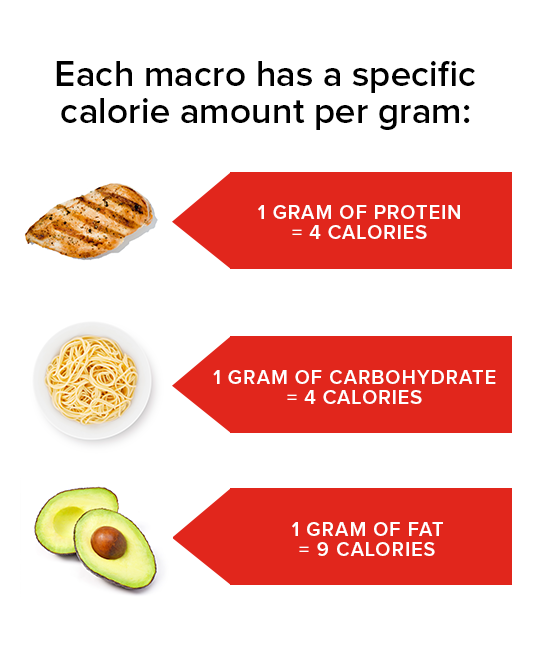When it comes to nutrition, learning how to track macronutrients (macros) can help you reach your health and fitness goals.
Tracking macros is helpful for so much more than weight loss. This method can help you understand how certain foods make you feel; which foods improve your performance at the gym; and which foods help you focus/have the opposite effect. Counting macros can also help you shift your current eating habits to healthier patterns for the long-term.
What are macros?
Macros are the main nutrients we need to survive. The three macronutrients are proteins, carbohydrates and fats.

Your macro ratio depends on your health and fitness goals, as well as how your body responds to particular foods.
How to calculate macros
To calculate macros, you need to do some math. Your intake ratio is written in percentages but nutrition information is provided in grams.
- First, you need to know how many calories you eat (or want to eat) each day.
- Next, determine your ideal ratio. For example, 40 percent carbs, 30 percent fat and 30 percent protein (this is a very common macro split).
- Then, multiply the total daily calories by the percentages.
- Finally, divide the calorie amounts by its calorie-per-gram number.
For example, let’s say Jane wants to eat 2,000 calories a day and she is following a 40 percent carb, 30 percent fat and 30 percent protein diet. She eats four meals a day, and each meal is 500 calories.
She is at a restaurant and is trying to make the best choice for lunch. She sees a meal option of chicken and sweet potato with cream sauce that looks good. She takes out her phone to do some math.
Meal total calories: 500
The meal needs broken down by calories and grams of each macronutrient:
- Protein: 200 calories – 500 calories meal x 40% 50g protein (200 calories/4 calories per gram)
- Fat: 150 calories – 500 calories meal x 30% 16-17g fat (150 calories/9 calories per gram)
- Carb: 150 calories – 500 calorie meal x 30% 37-38g carbohydrate (150/4 calories per gram)
We want to see how many grams of each protein, fat and carbohydrate it contains so we can determine if it fits into the desired macros.

If we go back to our meal needs, we see that this is a great lunch option for Jane:
Protein:
- 200 calories – 500 calories meal x 40%
- 50g protein (200 calories/4 calories per gram)
- 40-50g from chicken, 2g potato, 5g cream sauce (47g total)
Fat:
- 150 calories – 500 calories meal x 30%
- 16-17g fat (150 calories/9 calories per gram)
- 5g from chicken and 10g from cream sauce (16g total)
Carb:
- 150 calories – 500 calorie meal x 30%
- 37-38g carbohydrate (150/4 calories per gram)
- 26g from sweet potato and 11g from sauce (37g total)
Information on the nutrition facts of each meal needs to be found from an online source. As you become accustomed to this way of eating, it becomes easier to calculate and follow the plan.
